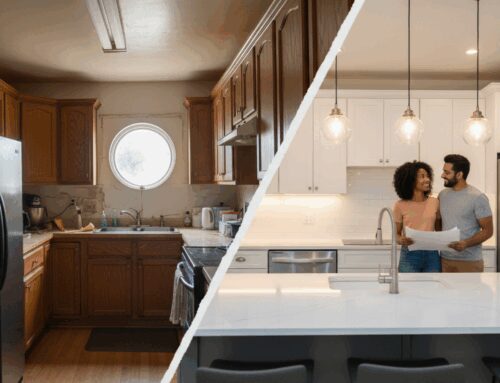Your home should be your sanctuary—a place of comfort, functionality, and personal expression. Yet many homeowners struggle with where to begin when it comes to enhancing their living spaces. Whether you’re preparing to sell, adapting to changing family needs, or simply craving a fresh environment, strategic home upgrades can transform your daily experience while significantly increasing your property’s worth. This comprehensive guide walks you through practical house improvement approaches that deliver real results without breaking your budget.
Strategic Planning for Successful Home Renovations
Before swinging a single hammer, successful home enhancement begins with careful planning. Rushing into projects without proper preparation often leads to costly mistakes and unfinished work. Start by assessing your home’s current condition, identifying areas that need immediate attention versus those that represent desired upgrades. Consider your long-term goals—are you improving for personal enjoyment, preparing to sell, or increasing rental value? Each objective requires different approaches and investment levels.
Setting Realistic Home Improvement Budgets
Financial planning separates satisfying renovations from stressful experiences. As a general rule, allocate 1-2% of your home’s value annually for maintenance and improvements. For major projects, obtain multiple quotes from contractors and add a 15-20% contingency fund for unexpected issues. Our detailed budget planning guide for home renovations provides specific formulas for different project types, helping you avoid financial strain while achieving your goals.
High-Impact Interior Upgrades That Transform Spaces
Interior improvements typically offer the most immediate satisfaction while delivering strong returns on investment. Focus on enhancements that improve both aesthetics and functionality, creating spaces that better serve your lifestyle.
Kitchen Remodeling Strategies for Modern Living
The kitchen remains the heart of most homes, making it a prime candidate for strategic upgrades. You don’t need a complete gut renovation to achieve dramatic results. Consider these cost-effective approaches:
- Cabinet refacing or painting instead of full replacement
- Upgrading countertops to quartz or butcher block
- Installing energy-efficient appliances
- Improving lighting with layered approaches
- Adding organizational systems to maximize storage
Bathroom Enhancements for Comfort and Value
Bathroom improvements consistently rank among the top projects for return on investment. Even modest upgrades can transform these essential spaces:
- Replacing outdated fixtures with water-efficient models
- Installing proper ventilation to prevent moisture damage
- Upgrading to comfort-height toilets and walk-in showers
- Adding storage solutions that reduce clutter
- Improving lighting for practical tasks
Exterior Home Improvements That Boost Curb Appeal
Your home’s exterior creates that crucial first impression while serving important protective functions. Well-executed outdoor enhancements can dramatically improve your property’s appearance and durability.
Landscaping and Outdoor Living Spaces
Thoughtful landscaping does more than beautify your property—it can reduce energy costs, provide privacy, and create valuable outdoor living areas. Consider these approaches to exterior enhancement:
- Strategic tree planting for summer shade and winter sun access
- Creating defined entertaining areas with patios or decks
- Installing efficient irrigation systems
- Adding landscape lighting for safety and ambiance
- Incorporating native plants that require less maintenance
Roofing, Siding, and Window Upgrades
While less glamorous than some projects, exterior envelope improvements deliver substantial practical benefits. Our comprehensive exterior maintenance guide covers these essential upgrades in detail, but key considerations include:
- Selecting roofing materials that suit your climate and architectural style
- Choosing low-maintenance siding options that provide proper insulation
- Installing energy-efficient windows that reduce heating and cooling costs
- Ensuring proper flashing and waterproofing details
Energy Efficiency and Smart Home Integration
Modern house improvement increasingly focuses on sustainability and technological integration. These upgrades not only reduce your environmental impact but also lower operating costs and enhance convenience.
Practical Energy-Saving Home Improvements
Reducing your home’s energy consumption represents one of the smartest investments you can make. Focus on these proven approaches:
- Adding insulation in attics, walls, and basements
- Sealing air leaks around windows, doors, and penetrations
- Upgrading to high-efficiency HVAC systems
- Installing programmable or smart thermostats
- Switching to LED lighting throughout your home
Smart Home Technology for Modern Living
Integrating technology can significantly enhance your home’s functionality, security, and efficiency. Start with these accessible upgrades:
- Smart thermostats that learn your schedule and preferences
- Lighting systems controlled by schedules or presence detection
- Security systems with remote monitoring capabilities
- Leak detection sensors that prevent water damage
- Energy monitoring systems that identify consumption patterns
Working With Contractors vs. DIY Home Improvement
Determining which projects to tackle yourself and which to hire professionals for requires honest assessment of your skills, time availability, and risk tolerance. While DIY approaches can save money, improper execution can create costly problems.
When to Hire Professional Contractors
Some projects inherently require licensed professionals due to safety concerns, code requirements, or specialized skills. Always hire qualified contractors for:
- Electrical work beyond simple fixture replacement
- Major plumbing modifications
- Structural changes to walls or foundations
- Roofing repairs or replacements
- HVAC system installation or modification
Successful DIY Home Enhancement Projects
Many satisfying improvements fall within the capabilities of motivated homeowners with basic skills. Our DIY home improvement resource for beginners covers these accessible projects in detail, but excellent starting points include:
- Interior painting and wallpaper installation
- Installing shelving and organization systems
- Landscape planting and basic garden features
- Fixture replacement in kitchens and bathrooms
- Basic tile installation for backsplashes or floors
Thoughtful house improvement represents an ongoing process of adapting your living space to better serve your evolving needs. By prioritizing projects that enhance both your daily experience and your property’s long-term value, you create a home that truly works for you. Remember that the most successful renovations balance ambitious vision with practical execution—transforming houses into homes that reflect and support the lives within them.






Leave A Comment